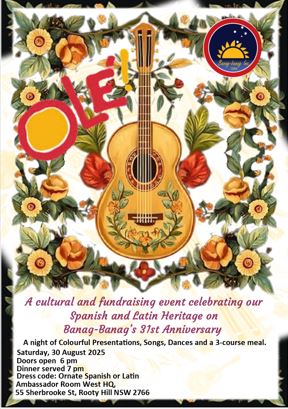Why early waves of
Filipinos left for Australia
Dr. Gil Marvel P.
Tabucanon
Ernst Ravenstein, the founder of modern migration studies, said
that while there are many
reasons why people migrate,
one motivation stands out:
it is our desire - a very human desire indeed -
to give ourselves and our families better amenities and
opportunities. It is the wish for a better life, a life of our choosing,
as indeed we have no choice where we were born. Migration, thus, signals
a significant choice for anyone wishing to carve out a new life in a
strange and faraway land.
Contrary to popular notions that Filipinos first arrived in
Australia in the 1970s, Filipinos had in fact
migrated to Australia as early as the 1860s, long before the
Australian federation of 1901. The first wave were pearl divers and
seamen. They worked in the pearl farms of Broome, Western Australia,
while others settled in Darwin and on Thursday Island in the Torres
Strait region. According to the Hamilton Report on the Pearl
Industry in Queensland, by 1896, there were 212 Filipinos working
in northern Queensland as pearl divers and gatherers of beche-de-mer
(sea cucumbers). By the time
Jose Rizal was executed on 30 December 1896, 119 Filipinos were already
residing on Thursday Island which had by then become the pearl industry
centre of Queensland. Many of the divers were seamen who were recruited
in Singapore and brought to northern
Australia by steam ships which served the Singapore and Brisbane
route.
Although prospects of employment and good wages were strong
incentives, the Filipinos also came at a time of escalating political
upheaval in the home islands. The failed Cavite mutiny of January 1872
by Filipino workers and military personnel at the Spanish arsenal of
Fort San Felipe brought with it not only the
execution of 41 mutineers. The years that followed saw the rise
of Philippine nationalism counteracted by increasing arrests and
deportation of Philippine liberals suspected of complicity in the
uprising. Some were deported to Guam and the Marianas, while others went
into voluntary exile in Hongkong. Reynaldo Ileto, in an article on
Philippine-Australian interactions in the late nineteenth century said
it is “tempting to speculate” that Heriberto Zarcal a prominent
Filipino businessman and
nationalist may have left for northern Australia in the 1890s
under “similar circumstances.” Zarcal, a supporter of the Philippine
revolution with well-known ties to President Aguinaldo arrived on
Thursday Island in May 1892.
Within five years living in the Torres Strait region, he became one of
the only five men on Thursday Island licensed to buy and sell pearls. He
ultimately became one of the island’s richest entrepreneurs. Primarily a
pearl merchant, he was also a lapidary (one who cuts or engraves
gemstones), optician, goldsmith and watchmaker. His stock of pearls and
diamonds was one of the largest in northern Australia.
Zarcal was not the only known nationalist who worked and stayed
in Australia. Candido Iban and
Francisco del Castillo, both from Aklan, dove pearls in northern
Australia. Upon winning the Australian lottery prize (equivalent to 1000
pesos) they returned to Manila and joined the Katipunan. They donated
400 pesos from their winnings to purchase a printing machine which
published Emilio Jacinto’s Kartilla and the Katipunan newspaper the
Kalayaan, also authored by Jacinto himself. According to Agoncillo and
Guerrero in History of the Filipino People, Iban and del Castillo
returned to their home island “to spread the doctrines of the
Katipunan.” Iban and del
Castillo’s unusual bravery and generosity, in the words of historian
Ileto, had earned for them an “honoured place in Philippine history.”












